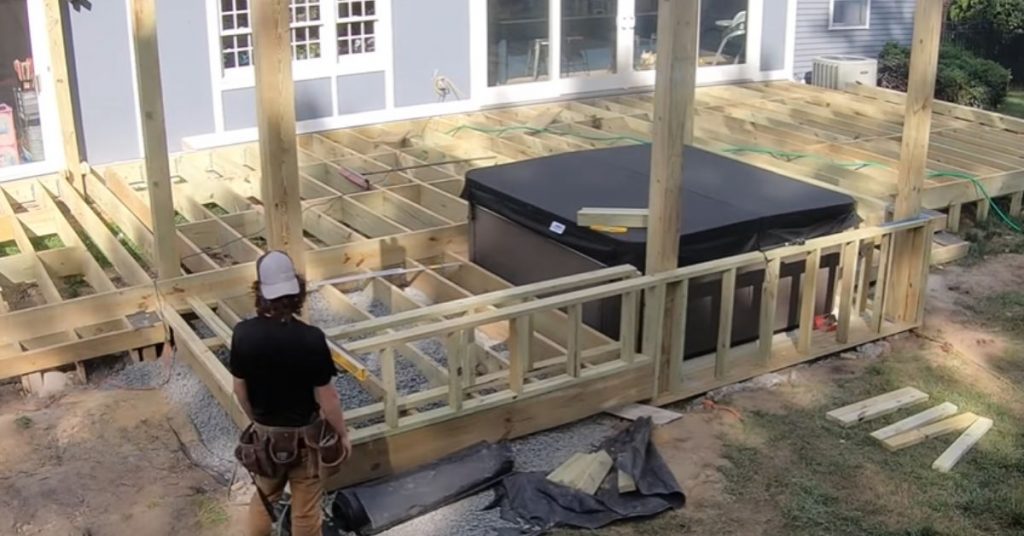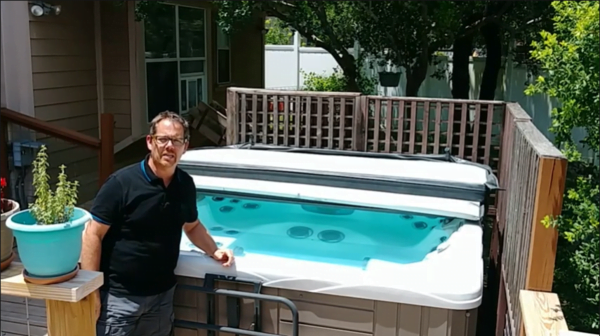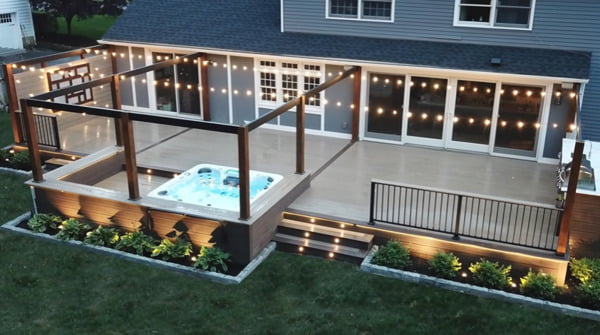In this post, we provide you with detailed instructions on how to install a hot tub. We explain what you need to know before installing the hot tub and how to complete the installation process.
For many people, owning a hot tub is a dream come true. It can be an amazing source of relaxation and enjoyment. However, if you don't install it properly, you could end up paying thousands of dollars to get your hot tub fixed! The good news is that you don't have to spend a fortune to have your hot tub installed. In this post, we will guide you through the process of installing a hot tub.
Safety First
First of all, never attempt to move a 500-pound hot tub alone. Ask for help when moving your hot tub to a suitable spot. Most hot tub suppliers have their own delivery personnel who can handle the task. They have their own equipment like furniture dollies, moving blankets, etc.
Some hot tubs need to be wired. If you haven't had training or experience doing electrical work, go get a licensed electrician. However, you can cut labor costs for things like digging a trench and laying the conduit.
When sanitizing your hot tub for first use, always remember to wear personal protection before handling chemicals and follow precisely what the label says. Sanitizers can be harmful if not handled properly.


What You Need
Get these things sorted out before installing your hot tub:
- Building Permits
Some hot tubs require building permits, particularly those that involve construction work like in-ground or custom-built hot tubs. However, building permits won't be necessary for most modern hot tubs like inflatables and above-ground hot tubs.
- Suitable Location
You need a flat, stable platform with at least 2 feet of free space around the hot tub. Commonly used platforms include concrete, gravel, pavers, and wooden deck. Concrete is more durable, while a wooden deck offers the best view.
- Electrical System
Hot tubs use a lot of power. Plugging it into any wall outlet around the house could trip one of the breakers. For this, you need an electrical system set up just for your hot tub. That includes wiring it to a GFCI breaker which leads to the feeder breaker in your main panel.
- Hot Tub
And the final piece is, of course, your choice of hot tub. Hot tubs come in many types and sizes. Inflatable hot tubs are among the popular choice because they're budget-friendly and are mostly plug-and-play (no installation needed). Another popular option is an above-ground, portable hot tub. It can either be wired or plugged into a 50 amp wall socket. And lastly, we have on the higher-end customized in-ground spas.


Installing Your Hot Tub
Once you have it all worked out, you can start the construction and electrical work. Hiring a contractor will make it easier for you, but you can also do it yourself if you have an experienced person who can help you.
- Clear the way for your hot tub.
Ensure there is no obstruction so the delivery personnel can quickly move your hot tub to your desired location. If it's a narrow path, ensure it's perfectly flat and not slippery so the hot tub doesn't tip over when transported on its side.
- Position your hot tub.
Orient your hot tub so you know exactly where to step in and out and where the power source would come from. Remember to have at least 2 feet of free space around it. You might need some levelers if you're using a sloped pavement. A tilted hot tub puts uneven stress on its wooden frame when filled with water, causing it to crack or break.
- Hook your hot tub to a power source.
You'll probably need a licensed electrician on this one. If you've done your prep work, like digging the trench and laying out the conduit, you might be able to save some money. Your electrician can finish the job much sooner, and you'll have your hot tub up and running in a couple of hours.
- Fill your hot tub.
Follow your hot tub's instructions manual on how to fill up your hot tub. Some manufacturers put antifreeze in their hot tub's plumbing and need to be flushed. When filling your hot tub, it's best to have the water come in through your hot tub's filter. It helps prevent air lock and filters your water at the same time. Check your hot tub for leaks while filling up, especially the plastic unions between your hot tub's plumbing which might come loose during the trip.
- Turn on your hot tub.
Modern hot tubs have a priming mode which is very useful when using them for the first time or after replacing your hot tub water. Your pumps will cycle on and off and start heating your hot tub. Depending on the hot tub size and power rating, this can take anywhere from three to eight hours.
- Add sanitizing chemicals.
Start adding sanitizers (chlorine or bromine) while heating your hot tub. Test the water from time to time until you get the right ppm which is 1-3 ppm for chlorine and 3-5 for bromine. Refer to the package instructions for the correct dosage based on how much water your hot tub holds.
- Wait until your hot tub is hot enough.
Heating your hot tub takes around three to eight hours, and chemicals must be balanced to ensure it's safe for everybody. Allow between 12 to 24 hours before using your hot tub and put the cover on so you don't lose too much chlorine and keep the water's temperature.


Conclusion
Planning and ensuring everything is worked out before installing your hot tub is essential. That includes having the necessary paperwork, proper tools and equipment, and getting the right people for the job. When in doubt, don't hesitate to talk with your hot tub supplier regarding proper installation and how to start using your hot tub.
